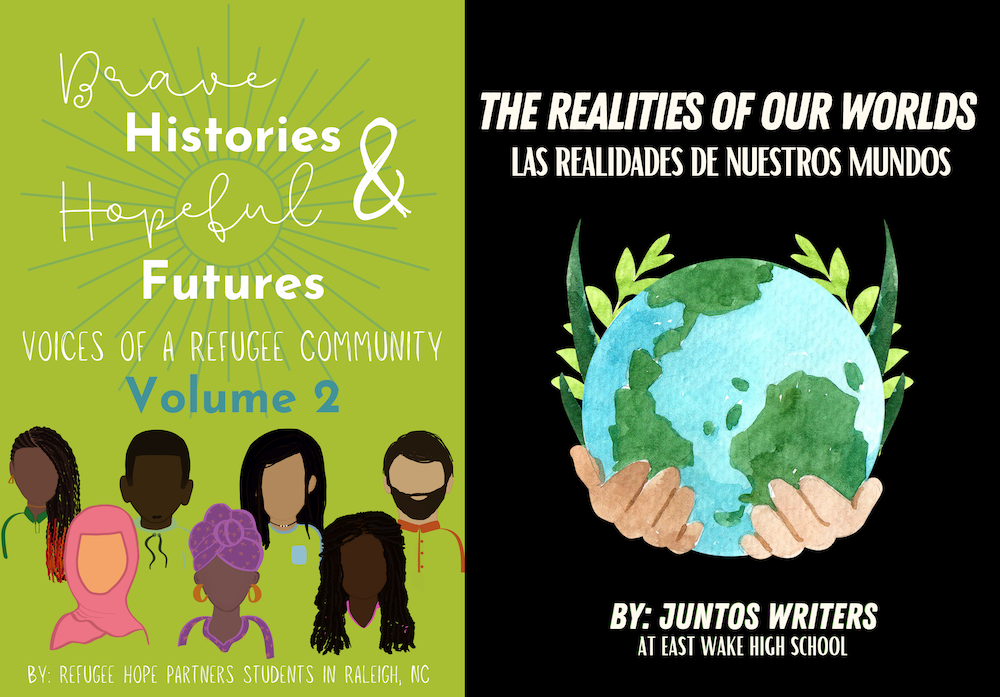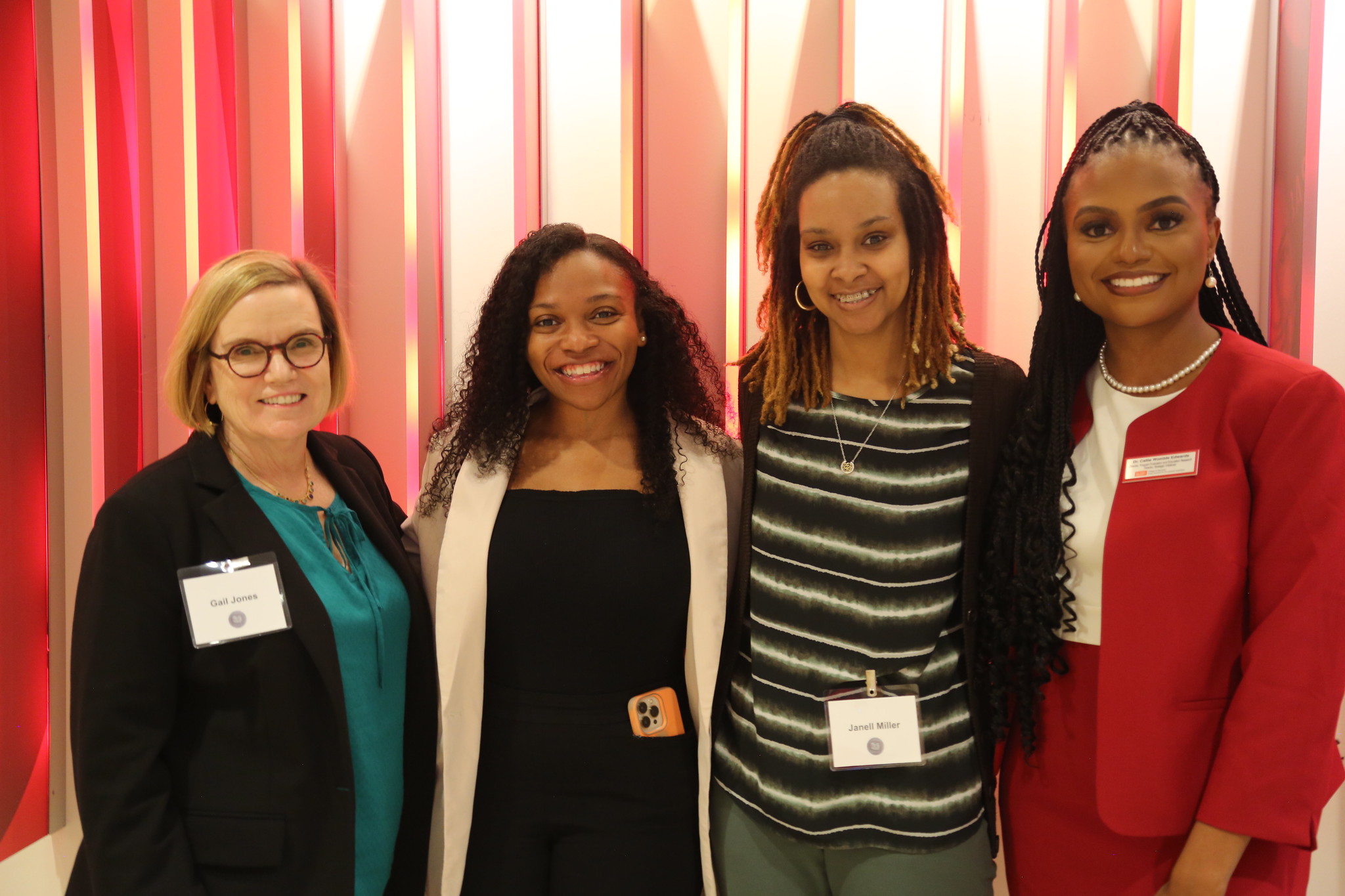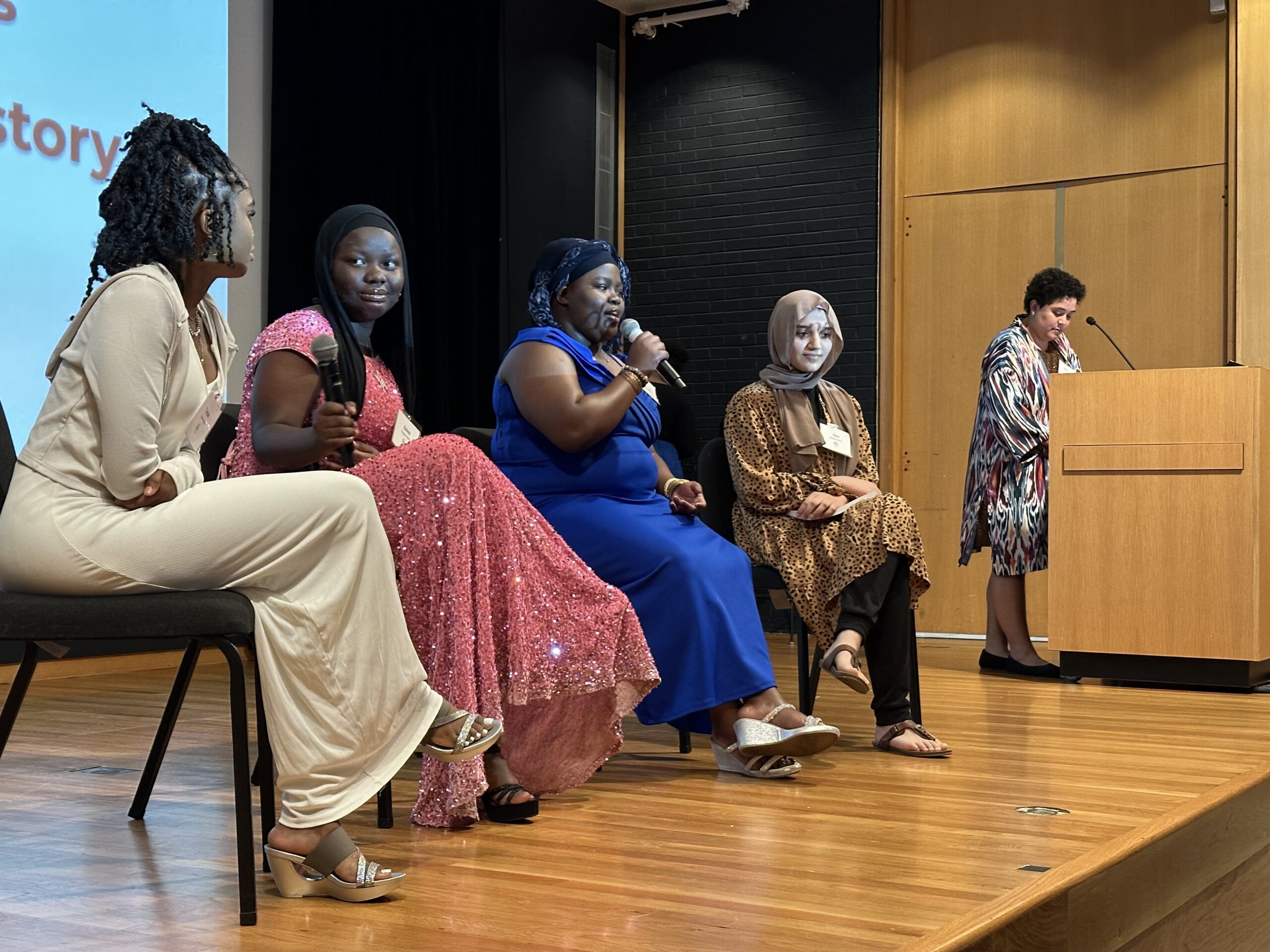Literacy and Community Initiative’s Fourth Annual Reading Celebration Highlights Artwork and Writing for the First Time

When Aaliyah, a student in the CORRAL Riding Academy program for girls in high-risk situations, first started painting for the Literacy and Community Initiative Storytelling Art Show (STARS), she sometimes struggled to focus at school. After participating in expressive art therapy as part of the Literacy and Community Initiative (LCI) partnership with CORRAL and the North Carolina Museum of Art (NCMA), Aaliyah was able to express her ideas through art while also writing to reflect and explain the motivation behind her creation.

“When I made this painting, I was inspired by how spaced out I had been,” said Aaliyah in her artist statement. “As soon as I was told about us doing this awesome activity, I instantly knew I wanted to do something to do with space in it…now thinking about it, being spaced out is my weakness and strength. It is my weakness because it makes it hard to focus in school but it is also my strength because it helps me dream bigger than I already do and it helps me look forward to my future, especially with CORRAL’s help.”
Aaliyah is one of the CORRAL artists who will be featured at LCI’s Fourth Annual Reading Celebration May 2, when youth from CORRAL and two other LCI partner organizations, Refugee Hope Partners (RHP) and Juntos, will read their written narratives from two newly released books, showcase their artwork and answer questions on their personal journeys. The event will also feature an open art gallery after the readings.
LCI is a collaboration between the NC State College of Education and the Friday Institute for Educational Innovation that partners with community-based organizations to examine, support and promote the power of youth voices. LCI’s partnership with NCMA is new this year and the artwork from CORRAL’s art therapy sessions will be on display during the reading celebration. This partnership was introduced by Angela Wiseman, an associate professor of literacy education in the NC State College of Education who has attended several LCI events and thought the partnership would be a natural fit for students who wanted to express themselves.
“I have always admired Crystal’s work with LCI, particularly how she uses literacy practices to support young adults who are historically marginalized,” said Wiseman. “The amazing thing about incorporating visual media is that it opens up ways of expressing and understanding students’ experiences, and young adults can use images, color, scale, etc. to convey their feelings and emotions.”
During the art program, CORRAL students were asked to write both artist bios and statements for the first time, and exploring the artist statement genre allowed them to give meaning to their artistic expression.
“Through this partnership, we have learned that art helps us express our emotions, ideas and thoughts when words are not enough,” said Crystal Chen Lee, assistant professor in the NC State College of Education, faculty fellow at the Friday Institute and LCI program director. “At the same time, literacy and art go hand in hand. I am going to quote one of our students who said, ’Words give context to art.’”
Natalia Torres del Valle, an expressive art therapist working with NCMA, led the expressive art therapy while LCI staff guided students in their writing.
“I loved seeing students’ confidence grow and how the materials they initially felt uncomfortable using were often the ones they chose to use in their final pieces,” said Torres del Valle. “It was wonderful to see the students encourage one another. And of course it was such a delight to witness the students exhibit their work at the North Carolina Museum of Art! I was able to listen to the students share their work with the public. They exuded such immense confidence and deep understanding of the meaning behind their work and the process it took to get there.”
The final pieces were featured during the Literacy and Community Initiative Storytelling Art Show (STARS) March 23. View all of the pieces and meet the artists here.
“One of the most significant areas of growth that I observed was some students’ adoption of an artist identity,” said Katie Peachy, a graduate research assistant for LCI. “At the beginning of the program, there were some that were hesitant to begin the projects and shared that they weren’t artistic. However, with the support of their CORRAL community and through the structuring of the program, they were able to see their own artist talents and capabilities bloom. Proudly standing by their pieces at the art gallery, they had become artists. They inspire me to take more healthy risks and seek to explore new avenues, especially when I don’t think I can.”
CORRAL artists will be featured at LCI’s Fourth Annual Reading Celebration May 2, when youth from CORRAL and two other LCI partner organizations, Refugee Hope Partners (RHP) and Juntos, will read their written narratives from two newly released books – Brave Histories and Hopeful Futures, Vol. 2: Voices of a Refugee Community and The Realities of Our World: Las Realidades de Nuestros Mundos.– showcase their artwork and answer questions on their personal journeys.
Brave Histories, written by RHP students, features poetry, prose, narratives, letters and multimodal text productions through which students explore “their identities, experiences, community and advocate for meaningful changes in the world.” The book shows “how individual and collective voices come together to demonstrate the strength of their community.”
The Realities of Our World, written by Juntos students, is a bilingual book that features the writing of eight Hispanic young authors from North Carolina who use poetry, prose, narrative and letters to “explore themes related to identity, family, traditions, culture and values that shape who they are and will become.”
“Every year, I am most excited to see the students’ confidence and bravery when they read their powerful stories,” said Lee. “I am also excited to see the students’ families, who always light up when they see their children read something they published. For many of our students, they have not had a platform before due to socioeconomic factors, language barriers and discrimination. We want the audience to know that their stories and voices matter.”
- Categories:


